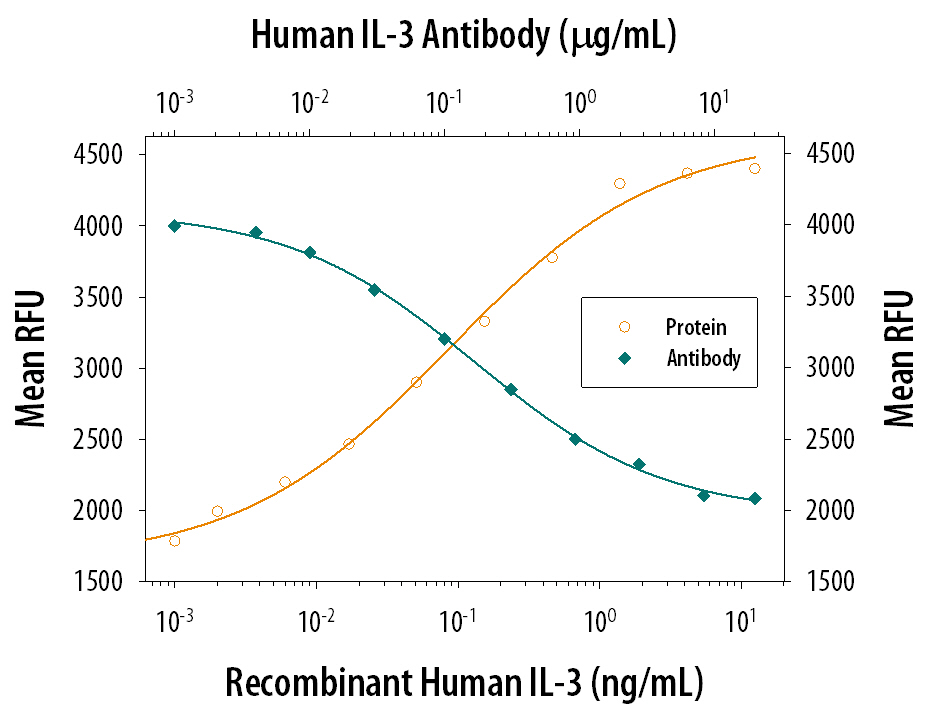Human Activin RIB/ALK-4 Antibody Summary
Leu32-Glu126
Accession # AAA60556
Customers also Viewed
Applications
Please Note: Optimal dilutions should be determined by each laboratory for each application. General Protocols are available in the Technical Information section on our website.
Scientific Data
 View Larger
View Larger
Detection of Human Activin RIB/ALK‑4 by Western Blot. Western blot shows lysates of A549 human lung carcinoma cell line, HeLa human cervical epithelial carcinoma cell line, and HEK293T human embryonic kidney cell line. PVDF membrane was probed with 1 µg/mL of Goat Anti-Human Activin RIB/ALK-4 Antigen Affinity-purified Polyclonal Antibody (Catalog # AF222) followed by HRP-conjugated Anti-Goat IgG Secondary Antibody (Catalog # HAF017). A specific band was detected for Activin RIB/ALK-4 at approximately 70 kDa (as indicated). This experiment was conducted under reducing conditions and using Immunoblot Buffer Group 1.
 View Larger
View Larger
Western Blot Shows Human Activin RIB/ALK‑4 Specificity by Using Knockout Cell Line. Western blot shows lysates of HeLa human cervical epithelial carcinoma parental cell line and Activin RIB/ALK-4 knockout HeLa cell line (KO). PVDF membrane was probed with 1 µg/mL of Goat Anti-Human Activin RIB/ALK-4 Antigen Affinity-purified Polyclonal Antibody (Catalog # AF222) followed by HRP-conjugated Anti-Goat IgG Secondary Antibody (Catalog # HAF017). A specific band was detected for Activin RIB/ALK-4 at approximately 70 kDa (as indicated) in the parental HeLa cell line, but is not detectable in knockout HeLa cell line. GAPDH (Catalog # AF5718) is shown as a loading control. This experiment was conducted under reducing conditions and using Immunoblot Buffer Group 1.
Preparation and Storage
- 12 months from date of receipt, -20 to -70 °C as supplied.
- 1 month, 2 to 8 °C under sterile conditions after reconstitution.
- 6 months, -20 to -70 °C under sterile conditions after reconstitution.
Background: Activin RIB/ALK-4
Activin RIB, also known as ALK4, is a glycosylated 58 kDa type I receptor in the superfamily of TGF-beta serine/threonine kinase receptors. Activin RIB associates with Activin RIIB to form a receptor complex for activin and inhibin molecules (1). These ligands bind to Activin RIIB which then associates with and phosphorylates the cytoplasmic domain of Activin RIB to initiate signal transduction (2, 3). Mature human Activin RIB consists of a 103 amino acid (aa) extracellular domain (ECD), a 23 aa transmembrane segment, and a 356 aa cytoplasmic region that includes the kinase domain (4). Within the ECD, human Activin RIB shares 93% and 95% aa sequence identity with mouse and rat Activin RIB, respectively. It shares 25% - 35% aa sequence identity with other human type I receptors Activin RIA, Activin RIC, BMPR-IA, BMPR-IB, and TGF-beta R1. Alternately spliced isoforms of Activin RIB have deletions in the cytoplasmic domain and function as dominant negative inhibitors of activin signaling (5, 6). Activin receptor signaling is modulated by the direct interaction of Activin RIB with cripto or inhibin binding protein (7-9). Activin RIB is excluded from the signaling complex if Activin RIIB first binds inhibin and betaglycan (10). Activin RIB functions in a wide variety of growth and differentiation processes, including embryonic cell fate and axis determination, cell proliferation and apoptosis, and tumorigenesis (1, 11, 12).
- Chen, Y- G. et al. (2006) Exp. Biol. Med. 231:534.
- Attisano, L. et al. (1996) Mol. Cell. Biol. 16:1066.
- Tsuchida, K. et al. (1995) Endocrinology 136:5493.
- ten Dijke, P. et al. (1993) Oncogene 8:2879.
- Xu, J. et al. (1994) Proc. Natl. Acad. Sci. USA 91:7957.
- Zhou, Y. et al. (2000) Mol. Endocrinol. 14:2066.
- Chapman, S.C. and T.K. Woodruff (2001) Mol. Endocrinol. 15:668.
- Bianco, C. et al. (2002) Mol. Cell. Biol. 22:2586.
- Gray, P.C. et al. (2003) Proc. Natl. Acad. Sci. USA 100:5193.
- Lewis, K.A. et al. (2000) Nature 404:411.
- Gu, Z. et al. (1998) Genes Dev. 12:844.
- Chen, Y. et al. (2004) Dev. Biol. 268:280.
Product Datasheets
Citations for Human Activin RIB/ALK-4 Antibody
R&D Systems personnel manually curate a database that contains references using R&D Systems products. The data collected includes not only links to publications in PubMed, but also provides information about sample types, species, and experimental conditions.
3
Citations: Showing 1 - 3
Filter your results:
Filter by:
-
Homozygous deletion of the activin A receptor, type IB gene is associated with an aggressive cancer phenotype in pancreatic cancer.
Authors: Togashi, Yosuke, Sakamoto, Hiroki, Hayashi, Hidetosh, Terashima, Masato, de Velasco, Marco A, Fujita, Yoshihik, Kodera, Yasuo, Sakai, Kazuko, Tomida, Shuta, Kitano, Masayuki, Ito, Akihiko, Kudo, Masatosh, Nishio, Kazuto
Mol Cancer, 2014-05-27;13(0):126.
Species: Human
Sample Types: Cell Lysates
Applications: Western Blot -
Activin A is an endogenous inhibitor of ureteric bud outgrowth from the Wolffian duct.
Authors: Maeshima A, Vaughn DA, Choi Y, Nigam SK
Dev. Biol., 2006-04-27;295(2):473-85.
Species: Rat
Sample Types: Whole Tissue
Applications: IHC -
Follicle-restricted compartmentalization of transforming growth factor beta superfamily ligands in the feline ovary.
Authors: Bristol SK, Woodruff TK
Biol. Reprod., 2003-12-03;70(3):846-59.
Species: Feline
Sample Types: Whole Tissue
Applications: IHC-P
FAQs
No product specific FAQs exist for this product, however you may
View all Antibody FAQsIsotype Controls
Reconstitution Buffers
Secondary Antibodies
Reviews for Human Activin RIB/ALK-4 Antibody
There are currently no reviews for this product. Be the first to review Human Activin RIB/ALK-4 Antibody and earn rewards!
Have you used Human Activin RIB/ALK-4 Antibody?
Submit a review and receive an Amazon gift card.
$25/€18/£15/$25CAN/¥75 Yuan/¥2500 Yen for a review with an image
$10/€7/£6/$10 CAD/¥70 Yuan/¥1110 Yen for a review without an image















